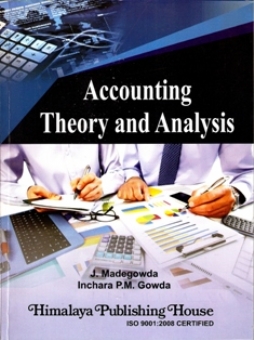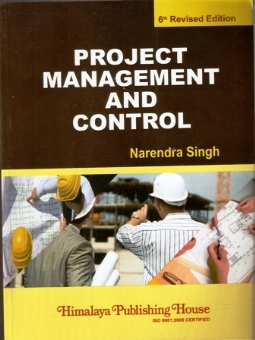Dealing with money, banking, international trade and public finance in one book all at the same time is more exciting and challenging to the writer as well as to the reader, as it provides a new dimension to one’s understanding of the macroeconomic world.
There is no dearth of books and literature on these fascinating subjects, yet most of them do not adequately meet the specific requirements of the student community at large. Too often, students are required to consult a large number of books and journals to obtain the information they seek. The few good books available have become out of date as the syllabii in the various universities and modes of analysis have changed considerably in recent years. Besides, economics of money, banking, trade and finance has undergone a dynamic evolution. New ideas and new institutions have emerged with far-reaching effects on the relevant issues and problems and their solution.
The present book has the following distinct features:
1. It is comprehensive.
2. It has an integrated approach with an Indian perspective.
3. It lucidly discusses the subject matter in a style that draws the student into the depth of the study, facilitating sound knowledge, understanding and appreciation of the subject. 4. It reviews the essential core topics of each field of money, banking, international trade and finance in a clear, precise and sequentially integrated manner so that the student can acquire an understanding of the subject.
5. It synthesises the materials scattered in numerous foreign authors’ books and journals. The subject matter has been presented in a logical order, in a lucid and narrative style, using numerous illustrations, charts and diagrams. It also gives a simple formalist presentation wherever needed.
6. It aims at giving a thorough grounding on the subject.
7. It contains discussions on the subject matter developed right from an introductory to an advanced level, suitably arranged section-wise so that the students can pick up the sections of his requirements, omitting the rest.
8. Most of the chapters in the book are written in a fairly self-contained manner. As such, the student can read the text in the order which suits best his interest and the requirements of his own syllabus or preference.
9. It incorporates numerous questions at the end of each chapter. These have been designed: (a) to test the student’s understanding of the subject matter discussed in the text; (b) to encourage the student himself to absorb the ideas expounded; and (c) to enable him to review definitions and important concepts during the course of his study. In the objective test section, multiple choice questions are set to provide practice in answering this form of questions, usually set in many professional examinations such as I.A.S., I.E.S., etc.
10. The book is designed to meet the varying needs of the graduate and post-graduate students and others interested in economics. As a whole, it should be of value to at least three categories of students: (i) undergraduates in economics and commerce reading for B.A. and B.Com. degree at the various Indian Universities; (ii) post-graduate students at M.A. and M.Com. Levels; and (iii) those preparing for professional examinations such as I.E.S., I.A.S., C.A., M.B.A., C.A.I.I.B., C.W.A., etc.
For the sake of convenience, the book has been divided into four parts in a logical sequence. Part I contains the subject-matter of money and banking, including Indian banking and the Reserve Bank’s monetary policy. Part II provides an exhaustive treatment of the theory of income and employment, including an analysis of trade cycles and measures of economic stabilisation. Part III deals with international trade: theory, policy and finance. Part IV elucidates the principles of public finance and fiscal policy, including a discussion on India’s Finance Commissions. A brief review of supply side economics has also been incorporated to keep the reader abreast of the latest economic trends in the West. Within this it is hoped that the book will serve as a comprehensive textbook for the students of B.A. and B.Com. degree courses and a basic reference book for the M.A. and M.Com. degree courses at all the Indian universities in general.
Money, Banking, Finance and Trade are the dynamics of macro studies in Economics and Management field. The subject is fascinating and fast changing in scope and application. In view of this, the author has taken the opportunity this time to recast, and thoroughly revise, rewrite, and update the discussion on the subject matter. It is hoped the present new edition will have enhanced utility to the reader.
Contents :
PART I : MONEY AND BANKING
1. The Nature of Barter and Monetary Economy
2. Functions and Significance of Money
3. Monetary Standards
4. The Gold Standard
5. The Money Supply
6. The Demand for Money
7. Value of Money
8. Quantity Theory of Money
9. The Income Theory of Money
10. Inflation and Deflation
11. Financial Markets (Money and Capital Markets)
12. Theories of Interest
13. Commercial Banking
14. Banking in India
15. Co-Operative and Rural Banking
16. The Central Bank and Instruments of Credit Control
17. Development Banks and Other Term Financing Institutions in India
18. The Reserve Bank of India: Organisation and Functions
19. Monetary Policy
20. A Review of The Working of The Reserve Bank of India
21. Indian Capital Market
22. Merchant Banking
PART II : THE THEORY OF INCOME AND EMPLOYMENT
23. National Income
24. Employment and Unemployment
25. The Classical Theory of Employment
26. Keynesian Theory of Employment
27. The Consumption Function
28. The Investment Function
29. Theory of Multiplier
30. The Accelerator Principle
31. Savings and Investment
32. Keynes` Theory and Underdeveloped Countries
33. Trade Cycles and Measures of Economic Stabilisation
34. Monetarism and Keynesianism
PART III : INTERNATIONAL TRADE: THEORY, POLICY AND FINANCE
35. The Nature of International Trade
36. The Theory of Comparative Advantage
37. Modern Theory of International Trade: General Equilibrium Approach
38. Gains from Trade and Terms of Trade
39. Mechanism of International Payments
40. The Balance of Payments
41. Trade Policy: Free Trade vs. Protection
42. Protective Trade Devices: Tariffs and Quotas
43. Exchange Control
44. The IMF and the Problem of International Liquidity
45. International Financial Institutions
46. Euro-Dollar Market
47. European Economic Community (EEC)
48. General Agreement on Tariffs and Trade
49. United Nations Conference on Trade and Development
50. The World Trade Organisation (WTO)
51. Foreign Direct Investment and Its Determinants
PART IV : PRINCIPLES OF PUBLIC FINANCE
52. Nature and Norms of Modern Public Finance
53. Public Revenue
54. Canons of Taxation and Principles of Equity
55. Characteristics of A Good Tax System and The Indian Tax Structure
56. Types of Taxation
57. Incidence of Taxation
58. Effects of Taxation
59. Public Expenditure
60. Public Debt
61. Fiscal Policy
62. Deficit Financing
63. Mobilisation of Resources for Development
64. Federal Finance
65. Supply-Side Economics: An Outline







